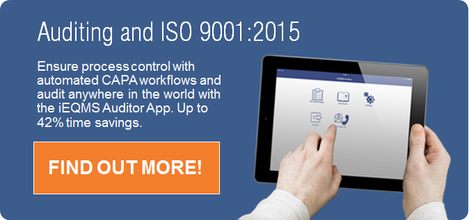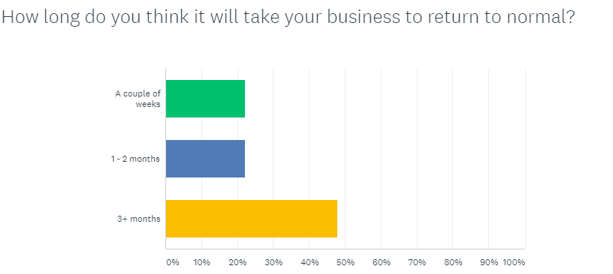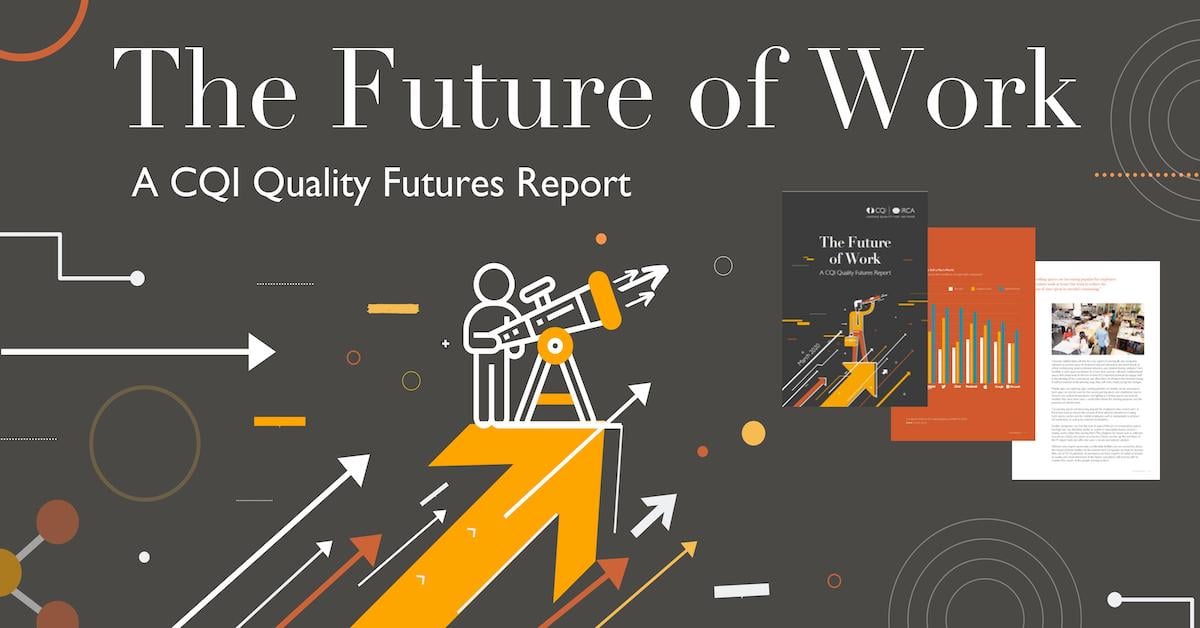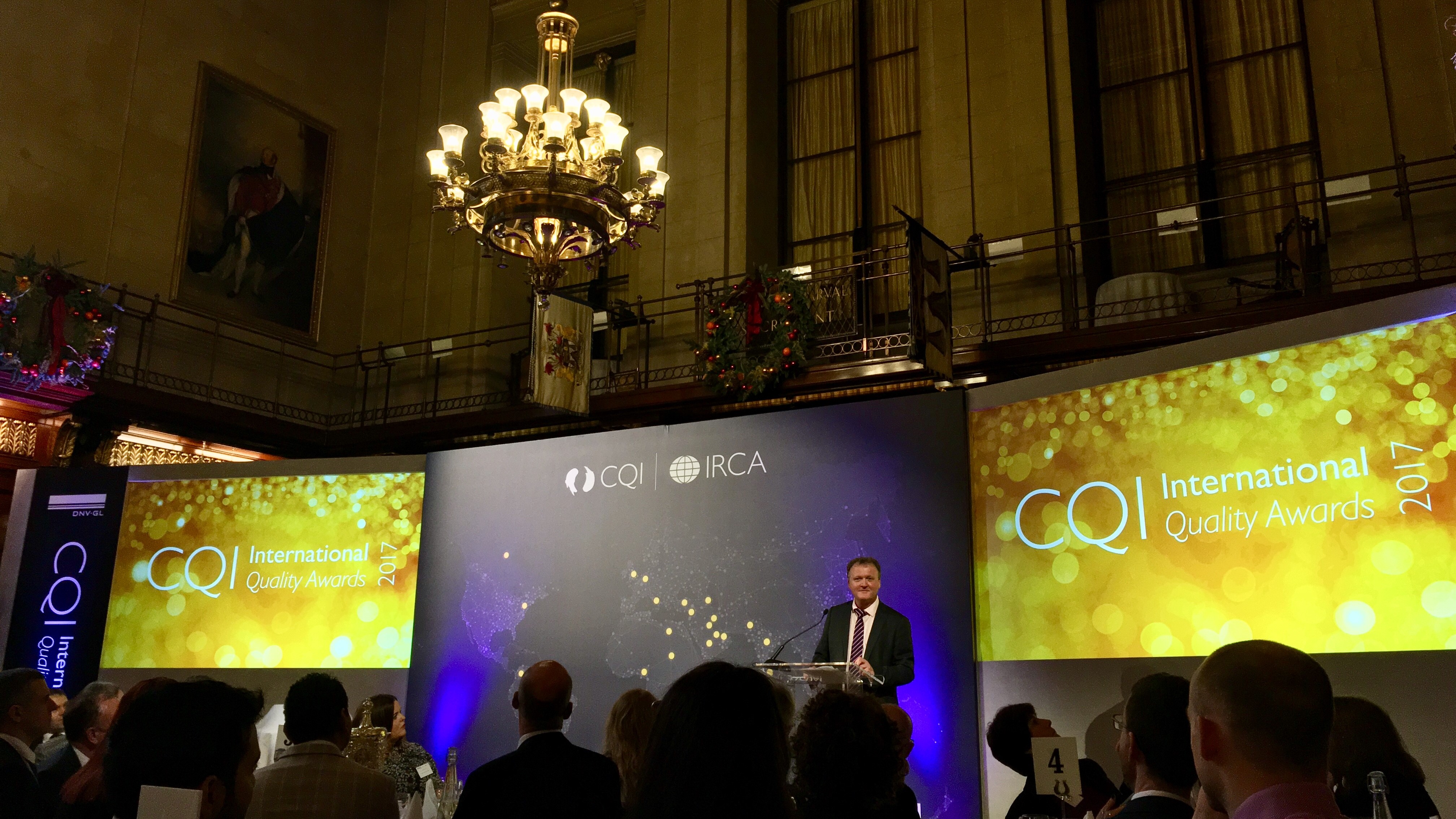Want to contribute to this article?
Qualsys recently attended the Chartered Quality Institute’s (CQI) Manchester Branch Event, ‘Repositioning the Quality Professional’, an event aimed to increase awareness around its new Competency Framework.
The CQI’s Competency Framework provides an overview of the competencies Quality professionals require to do their job effectively and is structured around governance, assurance and improvement.

Qualsys’ Callum Hornigold and Alastair Atcheson attended the event and joined speaker and CQI’s Head of Profession, David Armstrong, to discuss the issues those in the profession currently face.
Below is our detailed report covering the event, highlighting key issues, including:
- why there is a need for change
- how management can drive change
- how Quality professionals can take a more holistic view of Quality to drive their organisation forward in 2015.
Why the Need for Change?
On a number of occasions, quality professionals have failed to protect organisational reputation. Prominent cases of systematic wrongdoings such as the Tesco horse meat scandal and the Savar building collapse have garnered worldwide media interest. In both cases, neglecting Quality principles led to severe reputational damage and even death. However, the Quality departments were not held accountable by the press or public.
“I know we’re likely all comfortable that we add real value to our organisations but where are the news stories which say the Quality profession let us down?” says Armstrong. “As the Head of Profession for the CQI, the phone has not rung once for someone to say, ‘What is your plan to fix this further down the line?’ I’m not saying we’re accountable for saving the world but we’re accountable for our organisation’s culture. We have a statement of intent and we need to make sure we fulfill that statement.”
The CQI’s new Competency Framework aims to reposition the Quality professional as not just someone who ensures quality within their product / service, but someone who also protects their organisation’s reputation and stakeholder interests in all aspects of governance, assurance and improvement.
With 2015 bringing major developments to standards such as ISO 9001 – bringing more emphasis on risk based thinking and leadership – the CQI’s model provides a more holistic approach to quality.

Based around good governance, agile assurance and evaluation and improvement, the model puts strong leadership at the heart of an organisation. This strong leadership is enforced by a solid understanding and communication of the context of the organisation.
Six Essential Quality Questions
The model incorporates six questions today’s Quality professional should ask themselves in order to deliver a good service, each question being conducive to either governance, assurance or improvement.
Governance
Question 1: Is Management Intent Defined?
Under the new model, Armstrong stresses the importance of quality being at the heart of the organisation and embedded via strong leadership and a clear intent, maximising influence and developing a culture of evaluation and improvement.
“Management intent is the policies and processes that constitute a business management system (BMS). They are statements of how you will manage various facets of your organisation. The moment someone leaves the business, you cannot be sure the next person wants to run the business in the same way, therefore policies and processes change with management intent.
“There are many BMS’s out there where the names on the covers of the policies that state how they will operate are from people who have long retired, moved on or even died. How does that represent good governance and the clarity of purpose about how you operate your business?”

For Armstrong, management intent is one of the most crucial facets to drive good governance, agile assurance and improvement. While standards play a key role in solid governance, Armstrong stresses that standards alone will not ensure effective quality management.
“Standards are there to represent society’s interest in how you’re operating first and foremost. By setting an expectation to meet that standard there’s an assurance you’re not polluting the rivers and you’re not damaging the environment. We work in support of society through compliance to standards, we certainly work in support of customers, but we still need to be holistic in our approach and ensure management intent is evident and permeated throughout the organisation.”
From an external focus, this means using appropriate methods to establish both customer and other stakeholder needs and expectations (suppliers, shareholders, staff etc.) and ensuring the organisation’s policies, processes and plans reflect these needs. Organisations must evaluate risks, problems and potential solutions from a customer and stakeholder view.
“You cannot protect reputation by ensuring customer satisfaction only. You have to understand your entire stakeholder community, all of their requirements and work to achieve a balance across all departments. You can pick any stakeholder in your organisation and if you disenfranchise them enough, you will go out of business.”
Question 2: Is Management Intent Fit for Purpose?
An important consideration when defining management intent is whether it is fit for purpose. Policies, processes and plans must meet stakeholder expectations, removing variation, minimising operational risk and maximising efficiency. Under the new model, Quality professionals must support the management team in ensuring the operational approach and system of business management is effective, continually assessing it and working out new ways to improve.
“You can have a set of policies and processes that will generate shed loads of profit but in terms of management intent, it has to be fit for purpose from the stakeholders’ point of view,” says Armstrong. “You can be absolutely compliant with a really bad set of policies and processes that don’t fit what you need. However, the reality is if you don’t have the insight through asking whether management intent is effectively implemented and whether it produces the desired outcomes, you can’t grow an improvement agenda.”

Assurance
Question 3: Is Management Intent Effectively Implemented?
Question 4: Does It Produce The Desired Outcomes?
Solid business assurance assures the flow-down of customer and stakeholder requirements across the organisation. It ensures effective planning and internal controls are in place through a solid understanding of management’s requirements (intent), process implementation, risk management and performance measurement.
 A combination of process audits and external audits ensure organisations identify risks, failures and non-conformances associated with customer and stakeholder requirements and ensures effective action is taken to identify any issues and the root causes.
A combination of process audits and external audits ensure organisations identify risks, failures and non-conformances associated with customer and stakeholder requirements and ensures effective action is taken to identify any issues and the root causes.
The new model places greater emphasis on stakeholder requirements, with Armstrong encouraging organisations to not just look at internal assurance but also have tighter control over their supply chain and ensure supplier requirements are duly met.
“We’ve always been interested in outcome versus intent and whether we’re achieving the desired results, but do we do it holistically? For example, do we ask the supplier whether they’re happy to work with us? Are we ensuring employees aren’t feeling disenfranchised? These are essential considerations that Quality professionals and management must ask.”
Improvement
Question 5: Is There a Culture of Objective Evaluation?
Question 6: Is There a Commitment to Continually Improve?
Armstrong argues in order to effectively promote continual improvement there must be a culture of objective evaluation. Objective evaluation encompasses gathering insight through strong analysis of Key Performance Indicators, resulting in fact-based decision-making. This enables organisations to establish priorities for change.
However, as Armstrong states, “The biggest vehicle for change and improvement is culture.”. Under the new model, Armstrong believes that objective KPI reporting is not the primary driver for continual improvement, but rather individuals who are committed to change and want to prove themselves as valuable assets to the company.
“In most organisations, culture is the least likely driving force to be anchored in order to improve. What you usually get is another process, another training course and maybe another set of tools and technologies. But you need objective evaluation to drive change, looking at skills and competencies and the individual’s commitment to evolve the organisation rather than a simple popularity contest.”
Quality professionals must now evaluate the nature and magnitude of change required and how to achieve the required changes through the development of the organisation’s people foremost, then through an analysis of processes, tools, technologies and / or infrastructure.
“Driving change is the hardest part of this model. This is also an objective evaluation with respect to all the stakeholder requirements. ‘We know we’re complying with the standard because the evidence is…’ ‘We know employees are happy because the evidence is…’ ‘The suppliers happy to work with us because the evidence is…’ Fact based analysis is essential.”

Developing language and social skills
As Armstrong welcomes the audience’s questions, the sentiment in the room is generally positive. Quality professionals across the lecture theatre agree the CQI has provided a simple, pragmatic framework that is in-line with current industry trends. However, many are concerned at the model failing to address the issue of communicating quality internally across multiple departments.
It quickly becomes evident that Quality professional are facing a huge cultural challenge of communicating quality within their organisations. Many feel that a large number of members in their organisations have little knowledge of what they do and the benefits they bring.
While Armstrong agrees with the sentiment, he can only offer to cover the topic in future discussions due to time limitations. However, he recognises that Quality professionals are going to need to develop a range of communicative skills in order to flourish in the modern Quality environment.
“The biggest challenge for Quality professionals going forward is behavior. The range of skills and behavior we need is massively different,” he responds.
“Back in 1998, from my experience, everyone was either a practitioner such as a quality engineer or a manager. There was no sense that you needed different skills to go and talk to the external supplier and somehow charm and influence in order to get through the door and ask them how things are going – that’s a different skill from working on a manufacturing shop floor where people are building and saying the machine might not be calibrated. The skills of quality assurance have changed.”

Conclusion
The new model aims to reposition the quality professional as agents for change, who work with leaders to develop a culture of excellence and support. They are holistic in their approach and are able to speak to internal members and external stakeholders in the appropriate manner, both charming and influencing. Ultimately, they are the guardians of their organisation, identifying appropriate standards for performance and providing assurance they are being achieved.
Under the CQI’s new model, the successful quality professional will:
- adopt analytical, objective methodologies to…
- identify, report and address risks associated with meeting Stakeholder requirements and so…
- protect and enhance reputation and improve efficiency
While visionary, the model currently lacks detail in how exactly Quality professionals will overcome cultural challenges such as communicating the benefits of quality internally and adapting their communicative skills to address all key stakeholders. This certainly opens the door for future discussions.
However, a key point to be taken from the discussion is that Quality professionals will need to adapt to a role that is becoming increasingly demanding, requiring a broader range of skills if they are going to continue to deliver operational excellence. With the worldwide increase in social media networking, organisations have nowhere to hide, therefore quality professionals must now protect and enhance reputation. They must be agents for change, transforming both processes and culture. While some may find this an uphill struggle, requiring management’s backing, the results are likely to pay dividends.
2015 is set to bring dramatic changes within the Quality industry. Changes to ISO 9001, the introduction of Annex SL and the increased focus on leadership and risk based thinking all require Quality professionals to re-evaluate their priorities. Learn more about the essential changes with our free ISO 9001 Toolkit below.
Image credits:
mayrsom.com, justresources.com








Share your thoughts on this article